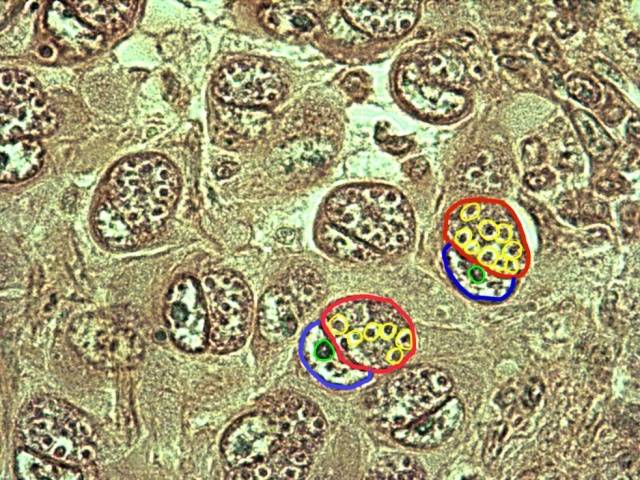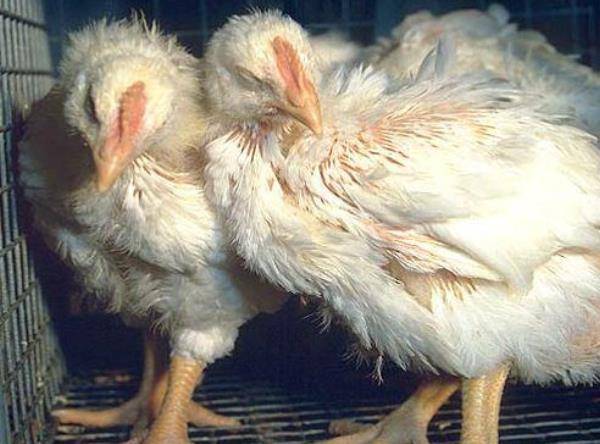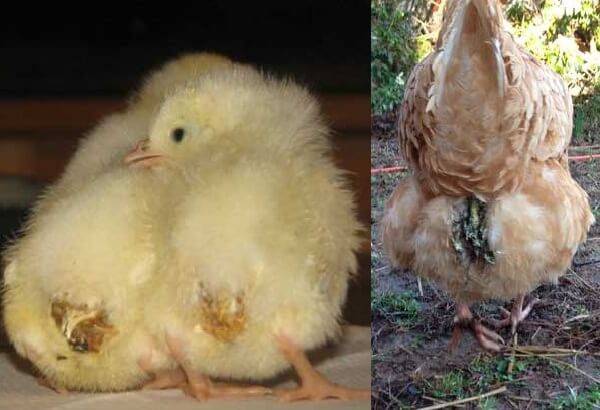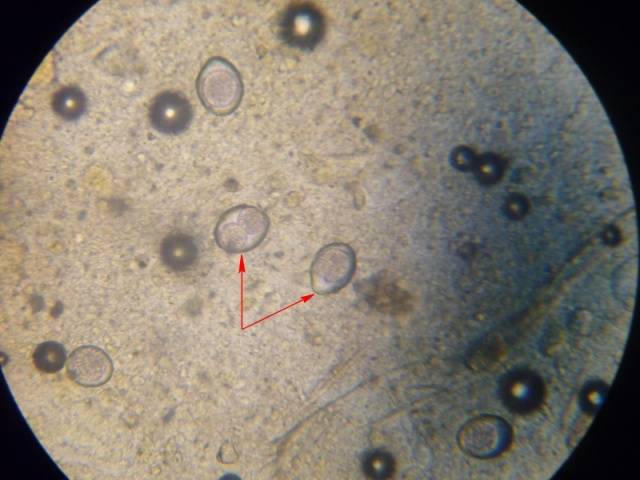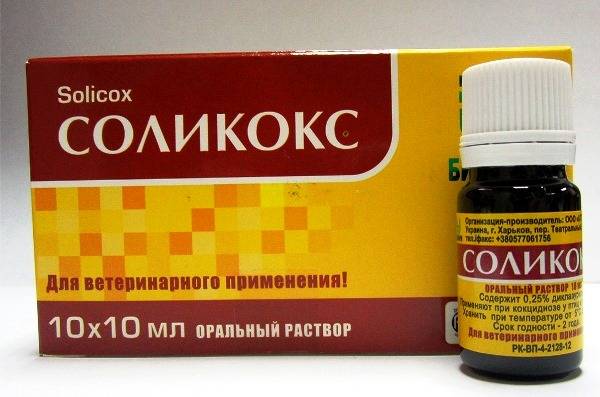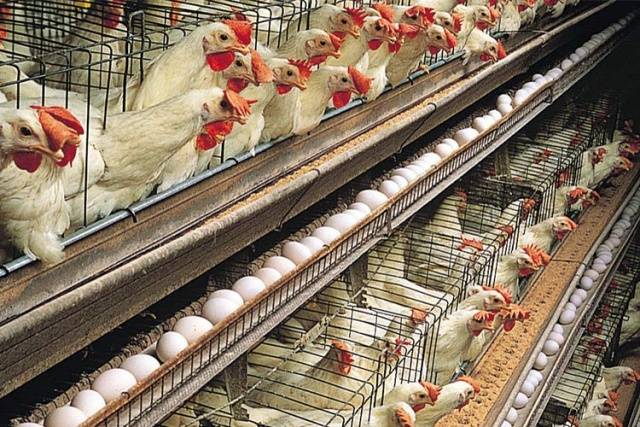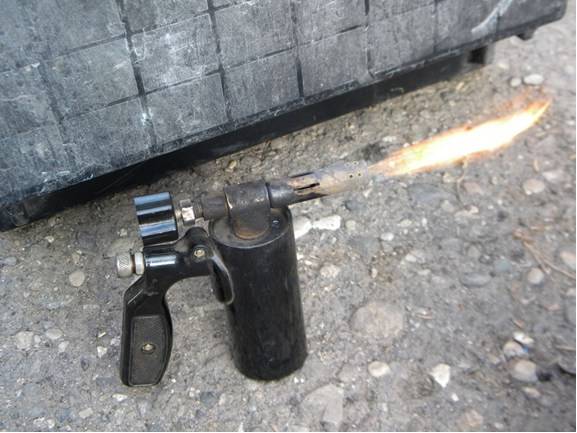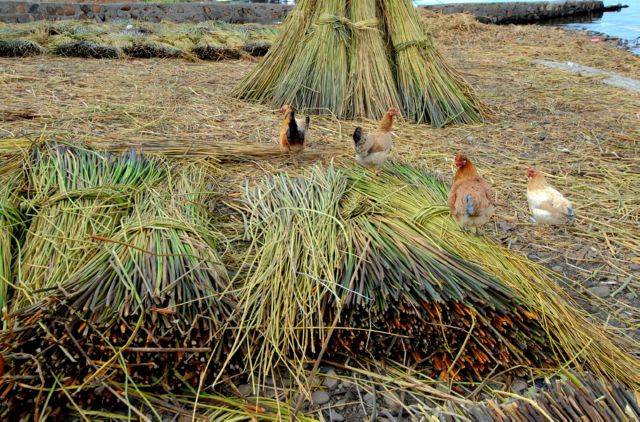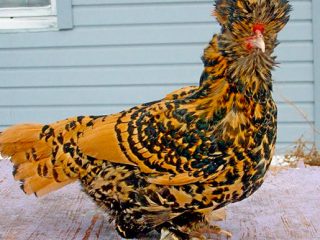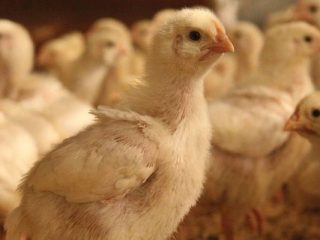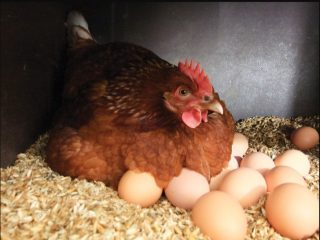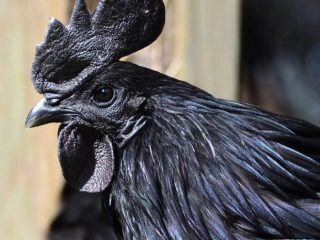Content
The scourge of chicken farmers, especially broiler owners, is not the advertised bird flu, but a microorganism from the order of coccidia that is little known to the general population. In chickens, the disease is caused by microorganisms belonging to the eimeria family. The common name of the people is "coccidiosis", but in the reference book on veterinary medicine symptoms and methods of treatment of this disease should be looked for in the chapter "Aymeriosis of chickens".
All living organisms, including humans, are susceptible to microorganisms from the order of coccidia. Fortunately, certain species of these protozoa are strictly specific and cannot exist in the body of another host.
But it should be borne in mind that coccidiosis in common parlance can also be called cryptosporodiosis of calves, also caused by the simplest of the order of coccidia. A person is susceptible to this disease.
Etymology of eimeriosis in chickens
Coccidiosis in chickens is caused by 11 types of eimeria. Of these, Eimeria tenella, Eimeria brunette, Eimeria necatricx, Eimeria maxima are the most dangerous. Eimeria tenella infects the cecum; other species parasitize in the small intestine. Chickens from 2 to 8 weeks old are especially susceptible to coccidiosis. Coccidiosis is also dangerous because it reduces the immunity of chickens to other diseases when affected by eimeria. Eimeria oocysts are very resistant to disinfectant solutions and cold. But they die when dried and at high temperatures.
Infection with eimeria oocysts occurs through contaminated water, feed, litter, grass and soil in the field, and feces. Eimeria oocysts can be brought in by insects, rodents, birds or people who do not follow the rules of hygiene. Coccidiosis spreads most rapidly when chickens are crowded in dirty poultry houses.
The severity of coccidiosis depends on the number and type of eimeria oocysts ingested. With a small number of oocysts, eimeriosis in chickens can be asymptomatic, with a large number - a severe course of coccidiosis is often fatal. In addition, the severity of the disease will depend on the location of the protozoa, the rate of their reproduction, the metabolism of the chicken and the level of its immunity.
When a chicken enters the body, the walls of the oocyst are destroyed under the influence of bile and eimeria passes into the active stage of existence. Basically, protozoa parasitize in the duodenum, destroying the epithelial cells lining the inner surface of the intestine. Over time, eimeria spread throughout the chicken's digestive tract. After an acute period of the disease, during which eimeria reproduce in the digestive tract of the chicken asexually, the protozoa switch to sexual reproduction - hematogonia, and the formation of oocysts. Ready oocysts enter the external environment along with the excrement of chickens, ready to infect a new host and a new breeding cycle.
Signs of coccidiosis precede the release of eimeria oocysts and can coincide in time only in case of re-infection of chickens with eimeria.
The life cycle from infection of the host to the onset of oocyst secretion is strictly individual for each type of eimeria and varies from 4 to 27 days. Eimeria reproduce asexually a limited number of times, so if there is no re-infection, the chicken will recover on its own. This is the basis for the "folk method" of treating coccidiosis with iodine.In other words, regardless of the use of iodine by the chicken, it would recover in the time period typical for the type of eimeria with which the bird is infected. You can not plant the thyroid gland in the chicken, but simply wait until it "passes by itself." But this means releasing new parasites into the external environment that will infect chickens again.
Here is a great video showing how chickens survive despite the efforts of the poultry farmers.
How iodine helps build immunity against coccidia is not clear. But it is clear that chickens consume a 5-year norm of iodine for an adult per day or less.
Symptoms and treatment regimens for coccidiosis in chickens
With strong immunity, chickens either do not become infected with coccidiosis at all, or they are asymptomatic. But chicks with weak immunity can get coccidiosis even from a simple change of feed or any other stress. It is necessary to treat coccidiosis in chickens, which occurs in an acute form for no more than 4 days and, often, with a 100% lethal outcome, immediately after the onset of signs of the disease. That is why it is necessary not to experiment with folk remedies, but to use proven drugs, coccidiostatics and antibiotics.
In chickens, coccidiosis is manifested by oppression, thirst, decrease, and later a complete lack of appetite. Feathers are ruffled, wings are lowered. Chickens huddle together, striving for warmth, do not react to irritations.
Liquid litter with a lot of mucus and blood... Since the severity of the disease directly depends on the amount of Eimeria chickens ingested, some individuals may look healthy. Perhaps they will develop immunity, but it is better to treat everyone. If the content of chickens is crowded and it is not possible to determine the consistency of the droppings by stains on the floor, it is enough to look at the cloaca area. In chickens and chicks with diarrhea feathers or fluff around the cloaca are dirty and stuck together with liquid droppings.
An accurate diagnosis can be made only after laboratory tests, since the external signs of coccidiosis are similar to borreliosis, histomonosis, pullorosis and trichomoniasis.
In the photo of eimeria under a microscope.
Due to the similarity of coccidiosis to other diseases, diagnosis and treatment at home is a lottery. Maybe the owner will guess the causative agent of the disease, or maybe not. In this case, the treatment of various diseases is carried out in different ways. While broad-spectrum antibiotics can still be used, coccidiostatics are harmless to other microorganisms. In addition, depending on the purpose of the poultry being raised, coccidiostatics of various groups are used:
- preventing the development of immunity to re-infection;
- not interfering with the development of immunity.
The first is used for chickens, which are soon planned to be sent for slaughter. There is no point in using other drugs, it is enough just to get rid of the current infection and prevent a new one. The second group is used in breeding and egg farming.
How to treat coccidiosis in chickens
Broilers are sent to slaughter with chickens at the age of 2 - 3 months. In this regard, the treatment of coccidiosis in broilers, in fact, is not carried out. There is no time for it. Instead of treatment, prophylaxis of coccidiosis in broiler chickens is carried out using coccidiostatics of the first group. Coccidiostatics are given throughout the entire feeding period and are stopped 3 - 5 days before slaughter.
Coccidiostatic preparations and doses in% of the feed weight
Pharmcoccid | 0,0125 |
Clopidol | |
Kayden + Stenerol | 25 + 0,05 |
Regikoccin | 0,01 |
Perbek | 0,05 |
Khimkokcid | 0,0035 |
In addition to coccidiostatics, broad-spectrum antibiotics are used, also as a percentage of the amount of feed.
Monensin | 0,012 |
Lasalocid | |
salinomycin | 0,06 |
Treatment of coccidiosis in egg and breeding chickens, as well as in laying hens, is carried out with other drugs and according to a different scheme. On egg farms and breeding farms, coccidiostatics of the second group and antibacterial drugs are used instead of antibiotics.
Dose of coccidiostatics of the second group as a percentage of feed and treatment regimen
Approlium | 0,0125 | 7 - 10 weeks | |
Koktsidiovitis | 0,1 | ||
Ardilon | 0.05 for prevention | 0.12 for medicinal purposes | |
Coccidin | 0,0125 | ||
Iramin | 0,4 | 2 courses of 10 days with a break of 3 days | |
Of the antibacterial drugs, sulfadimethoxin 0.01% to feed is used in three courses of 3 - 5 days with interruptions for 15, 20 and 35 days and sulfadimezin 0.1 - 0.2% to feed for 3 days with interruptions for 2 days. Sulfadimezin is given until the hens recover.
Prevention of coccidiosis on the farm
Paradoxically, it is easier for large poultry farms to prevent coccidiosis in chickens than for private owners. Treatment of coccidiosis in chickens is difficult and not always successful. If the infection with eimeria is too strong, treatment may no longer help. Therefore, preventive measures in large farms are aimed primarily at maintaining immunity in chickens. First of all, chickens are provided with a complete diet. Here it is worth considering whether chicken eggs from poultry farms are so bad.
It is recommended to provide optimal conditions for keeping chickens. To do this, chickens are kept in cages with mesh floors and try to exclude chicken droppings from entering the feeder or drinking bowl: a cage with external devices.
All poultry farm equipment must be systematically cleaned and disinfected. For disinfection, the equipment is treated with a blowtorch fire.
At broiler poultry farms, chickens are given coccidiostatics for prophylaxis according to a scheme agreed with the farm veterinarian in doses lower than that required for the treatment of coccidiosis in chickens. In farms unsuccessful for coccidiosis, chickens are vaccinated by feeding a certain amount of eimeria so that they do not cause symptoms of coccidiosis, but form immunity.
All this cannot be observed in private households, since chickens walk on the street, at best in open-air cages. At worst, chickens run around the village, communicating with relatives and rodents. Adult chickens can get coccidiosis but show no symptoms. But when a new batch of chickens appears, the private trader has to urgently treat coccidiosis in chickens. And the main problem is that young chickens have coccidiosis very rapidly. Often, owners lose the entire purchased batch of chickens. The only way out is to keep chickens in strict isolation from adult chickens, then there is a chance that the chickens will not get sick.
In contrast to the above video, an explanatory video with a detailed analysis of the symptoms of coccidiosis in chickens and a listing of drugs for the treatment of coccidiosis in chickens.
Conclusion
It is possible to cure coccidiosis in adult chickens, although it is better to prevent the development of the disease. If the chickens do get sick with coccidiosis, then there is no need to experiment by giving the chickens iodine or other folk remedies. It is better to keep a supply of antibacterial drugs and coccidiostatics in the house.
